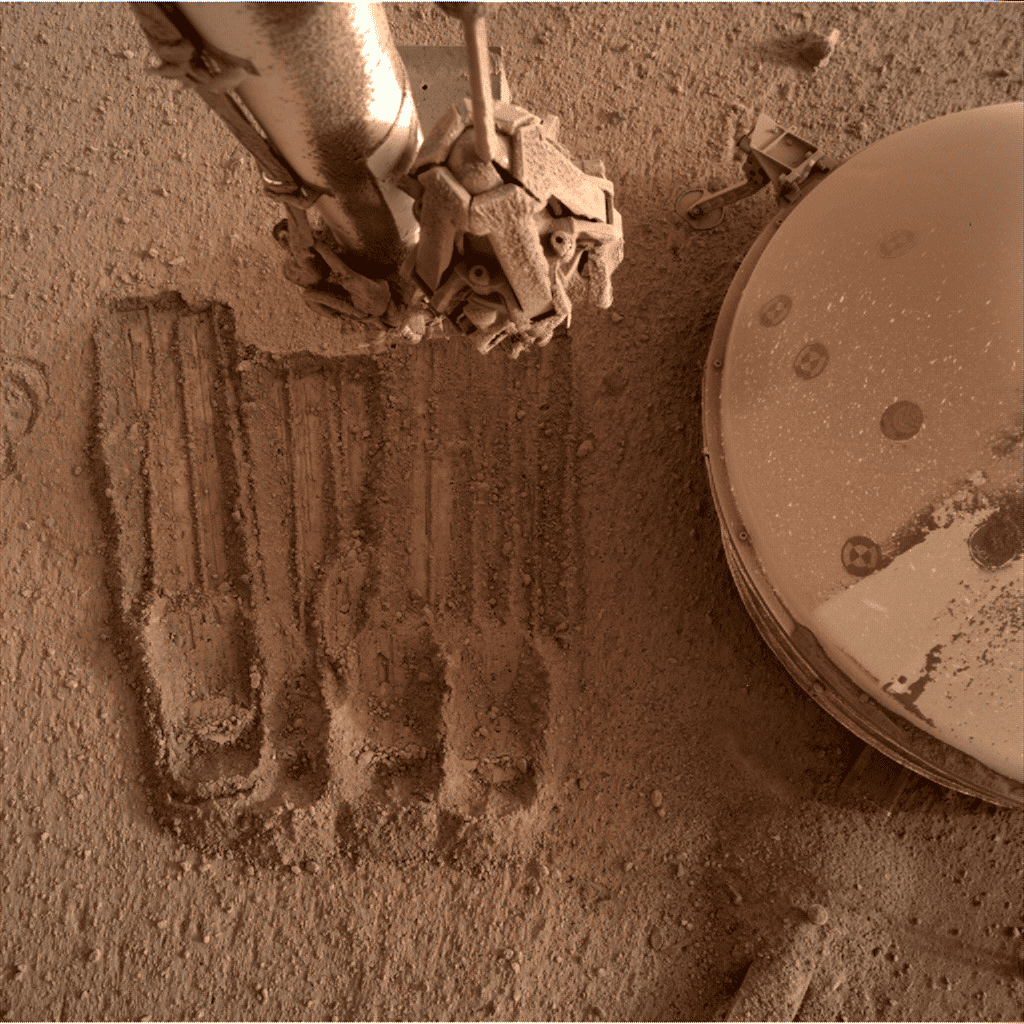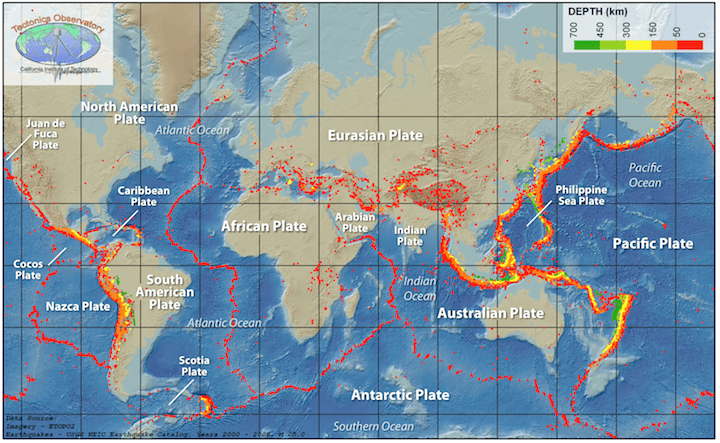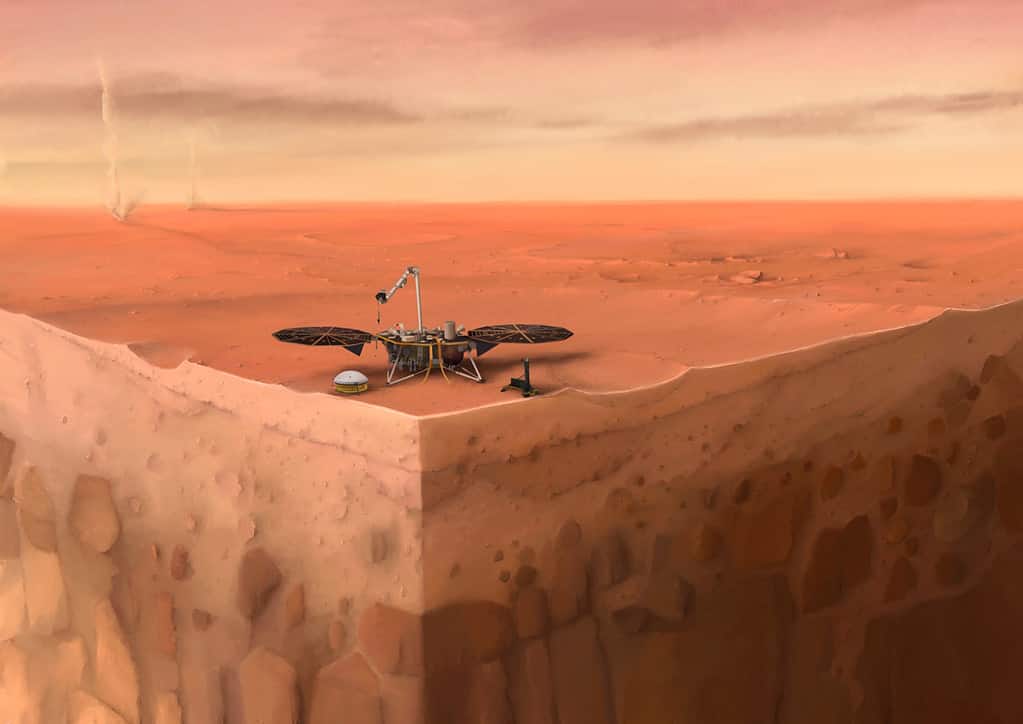
When a 4.7 earthquake takes place here on our planet, it’s not really newsworthy. But when it happens on Mars, like it did in May 2022, it’s huge. The reason is unlike Earth, Mars lacks plate tectonics. So when the InSight lander recorded a 4.7 marsquake, researchers assumed it was a meteorite impact.
Now, a new study says it wasn’t a meteorite after all. If there was one, it would have left behind a crater, but there’s no impact to be found. Which begs the question, how could such a marsquake happen otherwise?
Tectonics and Mars
Everything we see on the surface, the valleys, mountains, and plains, are part of a layer of the Earth we call the crust. The crust is relatively thin to the size of the planet — it’s thinner than the skin of an apple, relatively speaking. But the crust is not one continuous layer. It’s broken into rigid pieces called tectonic plates.
These tectonic plates are pushed around by heat currents in the mantle. They move at a speed of a few centimeters per year, comparable to how fast your hair or nails grow. When the plates push against each other or slide by each other, they can create earthquakes; in fact, the vast majority of earthquakes happen right at the edge of tectonic plates.

But Mars appears to have cooled down and does not have active plate tectonics. There are signs that it could have had tectonics in the past, but now its crust is pretty continuous and static.
Simply put, there’s no tectonic edge where the marsquake happened. So what caused the marsquake detected by NASA’s InSight lander?
Not a meteorite
Not all earthquakes happen at the edge of tectonic plates. Most of them do, but not all. For instance, meteorites can also cause temblors. Mars doesn’t have a thick atmosphere so it’s much more exposed to meteorites.
InSight was retired in 2022 after four years of operations. In that period, it recorded 1,319 marsquakes. Most of them were not at all strong — the 4.7 one was the biggest. In fact, this particular temblor had more energy in it than all the others combined. So if it was caused by a meteorite, it would have needed to be a big one.
“Such a crater would be expected to be ∼300 meters in diameter and have a blast zone on the order of 180 km across,” write the authors of the new study.
So they asked everyone to help: NASA, the European Space Agencies, and anyone that could help. They found no sign of such a crater. So in all likelihood, this wasn’t a meteorite either.
“We concluded that the largest marsquake seen by InSight was tectonic, not an impact. This is important as it shows the faults on Mars can host hefty marsquakes,” said planetary scientist Ben Fernando of the University of Oxford in England, lead author of the research published this week in the journal Geophysical Research Letters. “We really thought that this event might be an impact.”
A fault
We said that Mars doesn’t have any tectonics, so how can it be a tectonic quake?

Well, it’s not that straightforward. It’s not like tectonic plates move neatly one against the other and only produce earthquakes there, at the point of contact. The inside of each tectonic plate builds up a lot of stress; sometimes, that stress makes a part of the plate snap and move apart a bit. The most common result is a geological fault.
A geological fault is a fracture or zone of fractures in the Earth’s crust where rocks on either side have moved relative to each other. Think of it as a crack in the ground where two blocks of rock have slid past one another. Faults can also produce earthquakes — and researchers now believe that a fault also produced this huge marsquake.
“There are still faults that are active on Mars. The planet is still slowly shrinking and cooling, and there is still motion within the crust even though there are no active plate tectonic processes going on anymore. These faults can trigger quakes,” Fernando said.

This suggests that although major tectonic activity doesn’t exist on Mars anymore, some faults are pretty active.
“This represents a significant step forward in our understanding of Martian seismic activity and takes us one step closer to better unraveling the planet’s tectonic processes,” concluded Imperial College London planetary scientist and study co-author Constantinos Charalambous, co-chair of InSight’s Geology Working Group.
“Each seismic event detected by InSight is a valuable piece of the puzzle, but this particular event plays a crucial role in unveiling the Red Planet’s geological history, shedding light on its interior and evolution,” Charalambous said.
“Furthermore, it provides essential insights into the distribution of seismic activity on Mars, which is a vital consideration for planning future human missions to the planet.”
The study was published in Geophysical Research Letters.






